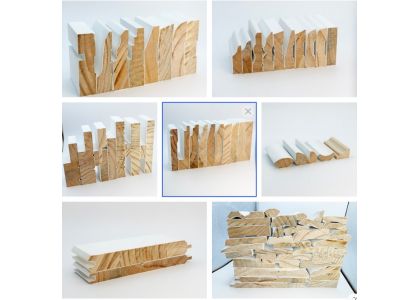
Overview:
The Australian market for wood mouldings is a significant segment within the broader timber and wood products industry. Wood mouldings, which include skirting boards, architraves, cornices, and other decorative or functional timber elements, are widely used in both residential and commercial construction. The demand for these products is driven by the construction industry, renovation activities, and the aesthetic appeal of wood in interior and exterior design.
Market Drivers:
Construction Industry Growth: The Australian construction sector, particularly residential housing, is a primary driver of demand for wood mouldings. The trend towards custom-built homes and high-end renovations has increased the need for quality wood products.
Aesthetic Appeal: Wood mouldings are favored for their natural beauty, versatility, and ability to enhance the architectural character of buildings. They are often used to add a touch of elegance and sophistication to interiors.
Sustainability Trends: With growing environmental awareness, there is a rising preference for sustainably sourced timber. Certified wood products, such as those endorsed by the Forest Stewardship Council (FSC), are becoming more popular.
Renovation and Refurbishment: The renovation market in Australia is robust, with homeowners and businesses frequently updating their properties. Wood mouldings are often replaced or added during these projects to modernize or restore the aesthetic appeal of spaces.
Key Players:
The market includes a mix of local manufacturers, importers, and distributors. Some of the prominent companies involved in the production and supply of wood mouldings in Australia include:
Britton Timbers
Boral
Hyne Timber
Tilling Timber
Product Types:
Skirting Boards: Used to cover the joint between the wall surface and the floor.
Architraves: Framing around doors and windows to cover gaps and add decorative appeal.
Cornices: Decorative mouldings used at the junction of walls and ceilings.
Dado Rails: Horizontal mouldings fixed to walls to protect against chair backs and add visual interest.
Coving: Similar to cornices but typically simpler, used to create a smooth transition between walls and ceilings.
Market Trends:
Prefabricated Mouldings: There is a growing trend towards prefabricated and pre-finished wood mouldings, which reduce installation time and labor costs.
Innovative Designs: Manufacturers are increasingly offering a wide range of designs and finishes to cater to diverse consumer preferences, from traditional to contemporary styles.
Technological Advancements: The use of advanced machinery and CNC technology has improved the precision and quality of wood mouldings, allowing for more intricate and customized designs.
Challenges:
Competition from Alternative Materials: Wood mouldings face competition from materials like MDF (Medium Density Fiberboard), PVC, and polyurethane, which are often cheaper and require less maintenance.
Supply Chain Issues: Fluctuations in timber supply, influenced by factors such as bushfires and global demand, can impact the availability and cost of wood mouldings.
Regulatory Compliance: Adhering to building codes and standards, particularly those related to fire safety and sustainability, can be challenging for manufacturers.
Conclusion:
The Australian market for wood mouldings is dynamic and influenced by various factors including construction activity, consumer preferences, and environmental considerations. While there are challenges, the market continues to grow, driven by the enduring appeal of wood and the ongoing demand for high-quality, aesthetically pleasing building materials. Companies that can innovate and adapt to changing trends and regulations are well-positioned to thrive in this market.